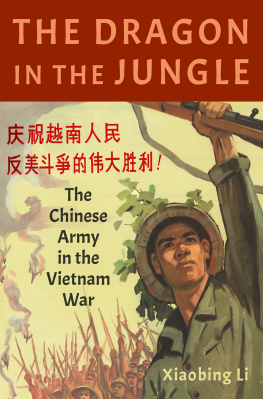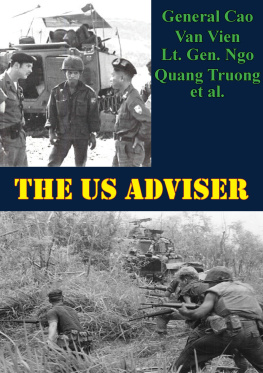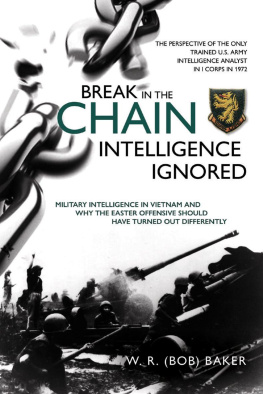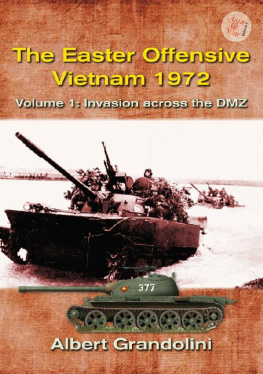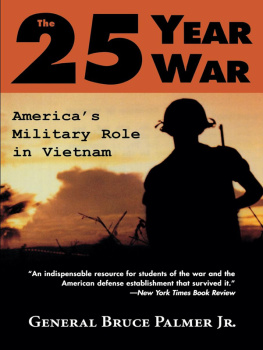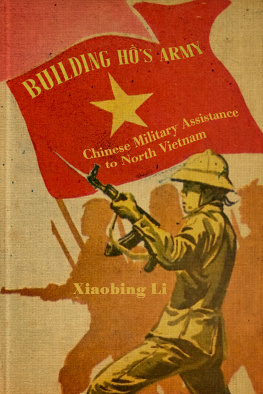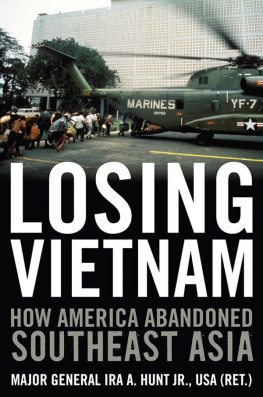

This edition is published by PICKLE PARTNERS PUBLISHINGwww.picklepartnerspublishing.com
To join our mailing list for new titles or for issues with our books picklepublishing@gmail.com
Or on Facebook
Text originally published in 1980 under the same title.
Pickle Partners Publishing 2015, all rights reserved. No part of this publication may be reproduced, stored in a retrieval system or transmitted by any means, electrical, mechanical or otherwise without the written permission of the copyright holder.
Publishers Note
Although in most cases we have retained the Authors original spelling and grammar to authentically reproduce the work of the Author and the original intent of such material, some additional notes and clarifications have been added for the modern readers benefit.
We have also made every effort to include all maps and illustrations of the original edition the limitations of formatting do not allow of including larger maps, we will upload as many of these maps as possible.
INDOCHINA MONOGRAPHS
THE EASTER OFFENSIVE OF 1972
BY
LT. GEN. NGO QUANG TRUONG
TABLE OF CONTENTS
Contents
INTRODUCTION
This is one of a series published by the U.S. Army Center of Military History. They were written by officers who held responsible positions in the Cambodian, Laotian, and South Vietnamese armed forces during the war in Indochina. The General Research Corporation provided writing facilities and other necessary support under an Army contract with the Center of Military History. The monographs were not edited or altered and reflect the views of their authorsnot necessarily those of the U.S. Army or the Department of Defense. The authors were not attempting to write definitive accounts but to set down how they saw the war in Southeast Asia.
Colonel William E. Le Gro, U.S. Army, retired, has written a forthcoming work allied with this series, Vietnam : From Cease-Fire to Capitulation . Another book, The Final Collapse by General Cao Van Vien, the last chairman of the South Vietnamese Joint General Staff, will be formally published and sold by the Superintendent of Documents.
Taken together these works should provide useful source materials for serious historians pending publication of the more definitive series, the U.S. Army in Vietnam.
JAMES L. COLLINS, JR.
Brigadier General
USA Chief of Military History
PREFACE
In 1968, a U.S. presidential election year, Communist North Vietnam initiated the Tet Offensive, striking at almost all major cities and towns of South Vietnam. This general offensive was eventually defeated by the collective efforts of the Republic of Vietnam, United States and Free World Assistance forces. Four years later, in 1972again a U.S. presidential election yearNorth Vietnam threw its entire military might behind an invasion to conquer the South. This time, however, South Vietnam had to fight for survival with only logistics and combat support provided by the United States. Almost all U.S. and Free World Military Assistance combat forces had been withdrawn when the first attacks began on 30 April 1972.
By all standards, the Easter Offensive of 1972 was one of North Vietnams most significant initiatives during the Vietnam War. This all-out effort involved eventually in excess of ten divisions on each side and affected the lives of well over a million South Vietnamese people. During the eight long months of fierce fighting, the Republic of Vietnam Armed Forces put Vietnamization to a severe test.
During the period of the Easter Offensive, I had the privilege of participating in some of its major battles, first as IV Corps and then as I Corps commander beginning in early May 1972. I visited many of our combat units as they fought the North Vietnam Army and commanded the RVNAF counteroffensive to retake Quang Tri City. My critical analysis of the enemy 1972 Easter Invasion, therefore, is based almost exclusively on my own personal observations, impressions and interviews with Vietnamese who were directly involved.
I am indebted to several distinguished officers of the Republic of Vietnam Armed Forces whose contributions I wish to acknowledge here. My gratitude first goes to General Cao Van Vien, Chairman of the Joint General Staff, RVNAF and my former airborne commander, who has provided me with several untold aspects of the offensive as seen from his vantage point and valuable guidance. Next, Lieutenant General Dong Van Khuyen, Commander of the Central Logistics Command, RVNAF, has contributed his unbiased comments on the joint RVNAF-US logistic effort to keep the areas under siege resupplied. Major General Nguyen Duy Hinh, who served in my corps as commander, 3d ARVN Division and who successfully rebuilt and reshaped this division into a strong combat unit, has provided me with his critical comments and judicious observations. Finally, Brigadier General Tran Dinh Tho and Colonel Hoang Ngoc Lung, the J-3 and J-2 of the Joint General Staff respectively, have contributed significant information concerning combat operations and intelligence from the JGS echelon.
Finally, I am particularly indebted to Lieutenant Colonel Chu Xuan Vien and Ms. Pham Thi Bong. Lt. Colonel Vien, the last Army Attach serving at the Embassy in Washington, D. C., has done a highly professional job of translating and editing that helps impart unity and cohesiveness to the manuscript. Ms. Bong, a former Captain in the Republic of Vietnam Armed Forces and also a former member of the Vietnamese Embassy staff, spent long hours typing, editing and in the administrative preparation of my manuscript in final form.
NGO QUANG TRUONG
Lieutenant General, ARVN
McLean, Virginia
31 August 1977
MAPS
No.
- The NVA General Offensive of 1972
- Key Locations and Fire Support Bases, MR-1
- NVA Attacks Across the DMZ, Quang Tri Province, 30 April 1972
- The Defense of Quang Tri, 2 April 1972
- The Shrinking 3d Infantry Division AO, Quang Tri Province
- The Defense of Hue, 5 May 1972
- Phase Lines North of Quang Tri
- Military Region 2
- Western Highlands Battlefield
- The Attack On Kontum
- Enemy Base Areas On Cambodian-RVN Border
- NVA Plan of Attacks in MR-3
- Key Locations, Binh Long Province, MR-3
- The Defense of An Loc, 12 April 1972
- The Mekong Delta, MR-4
- Enemy Base Areas in Military Region 4
- Enemy Regimental Dispositions in MR-4 (01 April 1972)
- Enemy Attacks in MR-4
- Enemy Regimental Dispositions in MR-4 (31 December 1972)
ILLUSTRATIONS
- 3d Division Soldier Digging In Near Dong Ha, 10 April 1972
- A M-48 Tank of the 1st Armor Brigade Guarding Route QL-9 Near Cam Lo
- ARVN Defensive Position on the My Chanh River
- I Corps Forward Headquarters, Hue Citadel
- An ARVN Antiaircraft Position Defending Hue City
- Hue Citadel Bracing for Defense, 8 May 1972
- President Thieu Visited the Defenses of the 1st Division
- The Author and MG H. H. Cooksey Beside the Symbol of Victory at Quang Tri City
- NVA 130-mm and 122-mm Artillery Captured in Quang Tri
- Captured NVA T-54 Tank Displayed in Saigon, 14 May 1972
- Public Display of NVA Weapons Captured During 1972 Easter Offensive
CHAPTER IINTRODUCTION
From Insurgency to Conventional Warfare
On 30 March, 1972, following heavy artillery preparations, three North Vietnamese Army (NVA) divisions spearheaded by tanks crossed the Demilitarized Zone (DMZ) into South Vietnam. From the north and the west, they attacked and overran the thinly defended forward outposts and fire support bases held by the 3d Infantry Division, Republic of Vietnam Army (ARVN). Three days later, further south in Military Region 3, three other NVA divisions closed in on An Loc, 60 miles north of Saigon, after taking a district town near the Cambodian border. Then, on 14 April, two NVA divisions attacked troops of the 22d ARVN Infantry Division who manned the defenses of northwestern Kontum in Military Region 2 while directly to the east, in the lowlands of Binh Dinh Province, another NVA division struck at the provinces three northern district towns. (Map 1)
Next page


